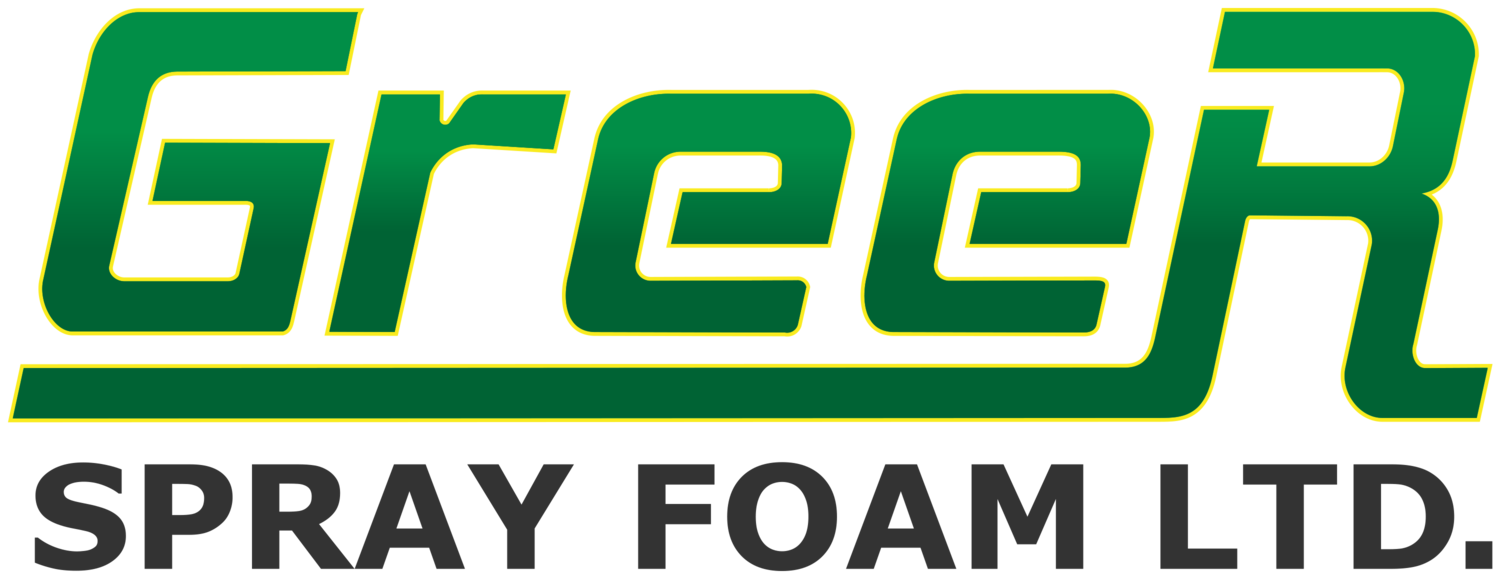Choosing an Eco-Friendly Spray Foam Insulation
Did you know that approximately 40% of all global warming is attributed to building and construction activities? The majority of that 40% comes from how we heat and cool our homes, but the use of highly efficient eco-friendly spray foam products can greatly reduce that.
While spray foam has conventionally been thought of as a higher-performing, but less environmentally friendly insulation option, thanks to advancements in technology and product development that is no longer the case. In late 2020 several ultra-environmentally friendly, low GWP and high performing spray foam products were released within the Canadian market that exceeds many comparable insulations, including mineral wool, in both performance and eco-friendly properties.
Building codes and regulations are helping to minimize the environmental footprint as well by mandating higher energy-efficient homes and structures. You can reduce your contribution to global warming with the insulation products you choose to install in your home or project.
In this article, we’re going to explore what makes certain insulation products more eco-friendly than others and how to choose the best one for your home or new construction project.
EPDs and GWPs: What are they?
To understand the environmental impact a product can have, you need to look at its Environmental Product Declaration (EPD) to see how it affects its global warming potential (GWP).
Home insulation products should have an independently verified EPD to help you compare quantifiable environmental data on the use of the product. This data correlates to its potential for GWP. For example, Mineral Wool is a popular insulation material. As the density of the wool increases, so does its EPD.
Here’s an illustration to show how several popular grades of insulation compare to Walltite CM01 (our preferred insulation at Greer):
How environmentally friendly and efficient is Walltite CM01 insulation?
When using Walltite CM01 for your insulating spray foam (which, as you can see from the above chart, has among the lowest environmental footprint of all insulating materials), you get support for multiple building system functions, including a:
vapour barrier
air barrier system
water-resistant barrier
air barrier material
radon barrier
Walltite CM01 is one of the most sustainable building insulating solutions on the market, with the lowest GWP. It’s part of your sustainable construction solution and can help you heat and cool your home more effectively while minimizing your environmental footprint.
At Greer, we love using Walltite CM01 for our customer’s insulation projects. What we love is that the benefits of this foam go way beyond a safe, long-lasting insulation product. It’s an eco-friendly spray foam insulation with one of the lowest environmental footprints without sacrificing quality and performance.
To get started using the Walltite CM01 eco-friendly spray foam insulation, use our contact form to schedule your free estimate today!


